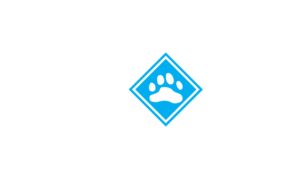Maine Huts & Trails has built four state-of-the-art huts which are connected by groomed ski trails in northwestern Maine. Meals are provided and overnight gear shuttled between the huts. They provide a level of accommodation that is unmatched elsewhere in the United States. For the last three years the Catamount Trail Association’s groups were the largest ones using the Maine Huts.
CTA board member Pete Lane organized our trip once again, and his experience made everything go smoothly. Most of us met for lunch in Kingfield on Monday. Cars were spotted along Flagstaff Lake so that they would be there when we finished the trip on Friday. It was a short ski on Monday to Stratton Brook Hut, the newest and highest hut, with views across the valley to Sugarloaf. The huts provide family-style meals and bag lunches. They are largely off the grid, have running water, and provide showers. Lodging is in adjacent bunk rooms which are heated to a comfortable temperature. Guests bring sleeping bags. The highlight each night is a tour of the energy and composting facilities. Clivus Multrum facilities operate on 3 ounces per flush. Solar arrays complement wood boilers, which heat the buildings and provide domestic hot water. Cell phones and other electronic devices are discouraged in the huts. Being out of touch for the week made it seem like a real vacation.
On Tuesday we enjoyed spring conditions on the 7 mile trip to Poplar Hut, where the rest of our group joined us. The cheese and crackers that I had shared before dinner on Monday were so popular that I went off the trail to get more to last us the rest of the week. On Wednesday we had lunch at a heated yurt which was between Poplar Hut and Flagstaff Hut. The sole on Lew Lasher’s ski boot disengaged early in the day. With tape and a strap Lew was able to get to his car at the Flagstaff parking lot, make the long drive to the Sugarloaf Outdoor Center in Stratton for a replacement pair, and return to Flagstaff Hut in time for dinner.
The temperature dropped on Wednesday night, which made for firm conditions on Thursday and Friday. Anticipating a long drive home on Friday, I spotted my truck at the Big Eddy parking lot north of Flagstaff Hut on Wednesday afternoon. The Maine Huts grooming machines made several passes on the trail between Flagstaff Hut and Grand Falls Hut, but there is little they could do in such cold conditions. Most of us walked the steeper sections. The Dead River drains Flagstaff Lake. Grand Falls are spectacular, and just below a bridge across the river. Grand Falls Hut is the newest, most remote, and I thought the most spectacular of the four huts.
It was sunny and cold on Friday, so conditions were firm once again. Pete Lane and others used my truck to shuttle cars to meet skiers at the Big Eddy parking lot. Although we had to wait a bit for our luggage to arrive at the Flagstaff parking lot, we enjoyed the sunshine and a chance to reminisce about our trip. My lasting impression will be of the friendships that I made during our trip.

The Maine Huts are open all year. During the shoulder seasons meals are not provided, and kitchen facilities are available for guests. Hiking, mountain biking, swimming, and paddling are popular during the spring, summer and fall. Canoes and kayaks may be rented at Flagstaff Lake for trips on the lake or whitewater down the Dead River. Long-term plans call for the hut system to be extended from the Mahoosucs to Moosehead Lake.
______________________________________________________________________________________________
This trip report was written by Joe Cook. Photographs were taken by Lew Lasher.
Next winter’s tour of the Maine Huts & Trails is scheduled for March 8-12, 2016. Stay tuned for more details!














